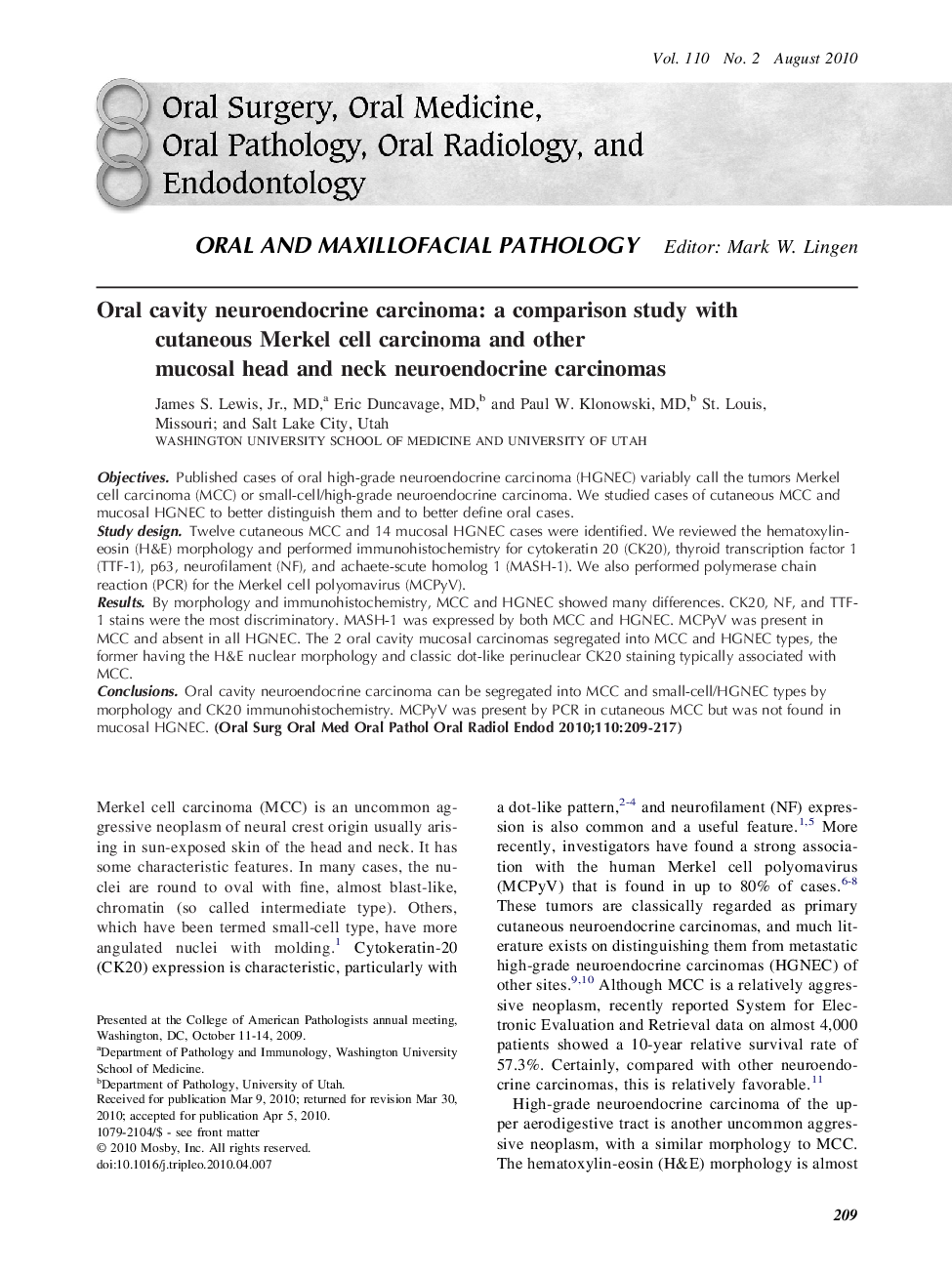| Article ID | Journal | Published Year | Pages | File Type |
|---|---|---|---|---|
| 3167517 | Oral Surgery, Oral Medicine, Oral Pathology, Oral Radiology, and Endodontology | 2010 | 9 Pages |
ObjectivesPublished cases of oral high-grade neuroendocrine carcinoma (HGNEC) variably call the tumors Merkel cell carcinoma (MCC) or small-cell/high-grade neuroendocrine carcinoma. We studied cases of cutaneous MCC and mucosal HGNEC to better distinguish them and to better define oral cases.Study designTwelve cutaneous MCC and 14 mucosal HGNEC cases were identified. We reviewed the hematoxylin-eosin (H&E) morphology and performed immunohistochemistry for cytokeratin 20 (CK20), thyroid transcription factor 1 (TTF-1), p63, neurofilament (NF), and achaete-scute homolog 1 (MASH-1). We also performed polymerase chain reaction (PCR) for the Merkel cell polyomavirus (MCPyV).ResultsBy morphology and immunohistochemistry, MCC and HGNEC showed many differences. CK20, NF, and TTF-1 stains were the most discriminatory. MASH-1 was expressed by both MCC and HGNEC. MCPyV was present in MCC and absent in all HGNEC. The 2 oral cavity mucosal carcinomas segregated into MCC and HGNEC types, the former having the H&E nuclear morphology and classic dot-like perinuclear CK20 staining typically associated with MCC.ConclusionsOral cavity neuroendocrine carcinoma can be segregated into MCC and small-cell/HGNEC types by morphology and CK20 immunohistochemistry. MCPyV was present by PCR in cutaneous MCC but was not found in mucosal HGNEC.
